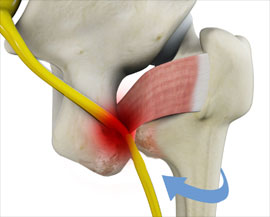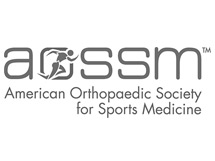Ischiofemoral Impingement

What is Ischiofemoral Impingement?
The narrowing of the space between the lower posterior part of the hip bone (ischium) and upper part of the thighbone (femur) and the resulting entrapment of soft tissues within the area is known as ischiofemoral impingement.
Causes of Ischiofemoral Impingement
Normally, the thighbone and the hip bone fit together perfectly to allow smooth movement of the hip joint without pain. But overuse, trauma, or surgery may alter the shape of the bones, so they rub against each other during movement causing friction. This friction causes irritation of the soft tissues and damage to the hip joint resulting in pain and limitation of activity over time.
Symptoms of Ischiofemoral Impingement
Hip pain is the main symptom of ischiofemoral impingement. The pain may be mild at first and becomes worse over time as the bones rub against each other causing more inflammation and damage. The pain is normally confined to the buttocks but may occasionally spread to the groin and other adjacent areas as well.
Diagnosis of Ischiofemoral Impingement
To diagnose ischiofemoral impingement, your doctor will discuss your symptoms and perform a physical exam. During the exam, your doctor may feel for certain tender points on your hips. Imaging tests such as X-rays or an MRI may be ordered for confirmation of the diagnosis.
What Happens if Ishiofemoral Impingement is Left Untreated?
If left untreated, ishiofemoral impingement can lead to development of bone spurs (bony outgrowths) that worsen the friction between the hip bone and thighbone causing rapid degeneration of the hip joint.
Treatment of Ischiofemoral Impingement
Treatment may include activity modification, steroid injections, or surgery. At first, your doctor may advise rest and prescribe oral medicine to manage pain and other symptoms. Conservative measures may also include steroid or pain injections. If none of these measures help, then surgical treatment may be recommended by your doctor as the final option.
Prevention of Ischiofemoral Impingement
Avoiding or limiting activities that cause pain in the buttocks and hips area is the best way to prevent this condition.










